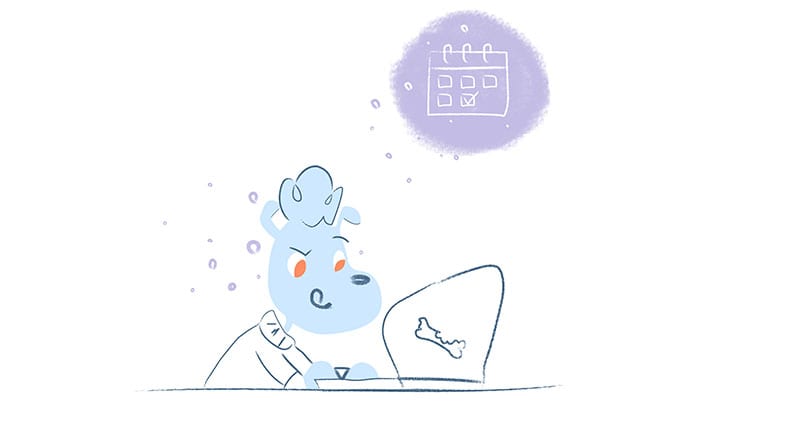

Ever since the clocks fell back, aka the end of daylight saving time, I’ve been slightly off. But, it’s gradually getting better. But, I’m still feeling like I’m a member of Marky Mark and the Funky Bunch — sorry, kids for the outdated Mark Wahlberg reference.
While this may sound like I’m complaining, there is some validity. First, for many of us, changing from daylight saving time to standard time is a significant inconvenience. Mainly because it disrupts our routines — in particular sleep.
“Sleep is a kind of outward symbol of the timing processes of our body,” Chris Winter, M.D., author of, “The Sleep Solution” and president of the Charlottesville Neurology and Sleep Medicine clinic in Virginia told NBC News. “Our bodies function on an internal schedule, from hormone release to body temperature to cognition – and sleep is linked to them all.”
Moreover, this can also affect our appetite and mood. It’s also been found that daylight saving time shifts can affect cognitive performance resulting in more accidents including car crashes and workplace injuries.
But, just when you thought that you finally adjusted, the shorter days and colder weather present another problem; seasonal affective disorder.
A change in seasons often triggers seasonal affective disorder (SAD). Often beginning in late fall, this seasonal depression worsens in the winter and then subsides in the spring, this is experienced by 5% of U.S. adults.
However, as the Cleveland Clinic notes, SAD is much more than just the “winter blues.” Why? Because it can interfere with your daily life in the following ways;
- Sadness and anxiety
- Inability to concentrate
- Fatigue and lack of energy
- Sleeping more
- Carbohydrate cravings and weight gain
- Loss of interest in usual activities
There is some good news, though. You can ease and overcome seasonal depression by doing the following.
1. Don’t wait until it’s too late.
There’s a spot on my deck that gets pummeled by raindrops. After ignoring this for some time, the wood has been eroded leaving a small pit. If I had addressed this earlier, I wouldn’t have to replace the board or come up with some other solution to fix the problem.
While not a perfect analogy, the concept is similar. Instead of waiting for SAD to interfere with your life, take precautions now. For example, picking up new hobbies that you enjoy or making plans with friends.
Moreover, if you’ve experienced SAD symptoms in the past, you may want to schedule an appointment with a mental health professional. They can help you work through your thoughts and behaviors through talk therapies like cognitive behavioral therapy. In more severe cases, they may prescribe your antidepressants.
2. Go outside.
Research has shown time and time again that spending time outside is the best way to fight back against SAD. How so? Well, hanging out in nature lifts our spirits and improves our mood. It’s also a sneaky way to squeeze in a little physical activity.
Of course, when the wind is whipping, and it’s overcast, you don’t always want to be outside. However, even just five minutes might do the trick.
According to an Essex University study, five minutes of “green exercise” in nature, or being outside, was enough to boost participants’ mood and self-esteem. But, if you’re able to stay outside for ten minutes, you’ll get some much-needed Vitamin D. And, after twenty minutes, you’ll feel less stressed.
So, consider going for a brisk walk after lunch. Or, try planning cold-weather activities that get you outside, like skiing or building snowmen with your kids.
3. Lighten the mood.
Counselors, psychotherapists, and the NHS recommend investing in a lightbox, SAD alarm clock, or SAD light bulbs for people suffering from depression. “The idea behind light therapy is to create a simulation of sunlight by sitting in front of a special lightbox for 20-30 minutes per day,” explains psychotherapist Lindsay George. “This is so that the melanopsin receptors in the eyes can trigger the required serotonin release within the brain for natural sleep cycles and general feelings of well-being.”
4. Spruce up your workspace.
We know that your workspace has a direct impact on your productivity. But, how you set up your work environment can also assist you in easing SAD symptoms. For example, you could move your desk closer to a window to get more natural light.
Some other suggestions on how to spruce up your workspace this winter are;
- Organizing and cleaning your work environment to eliminate stress and nasty germs.
- Personalize your workspace to give you a greater sense of control and keep you focused.
- Introduce more live plants, like succulents, to introduce nature inside and improve your mood.
- Invoke your senses through aromatherapy. For example, sweet orange helps with anxiety reduction, peppermint improves performance, and rosemary boosts concentration.
5. Practice Hygge.
For the last several years, a lot of people have jumped onto the Hygge bandwagon. And, it’s easy to see why.
Originating from the happiness capital of the world, this Danish concept refers to finding comfort, enjoyment, and warmth in the simple things in life. Examples include;
- Reading a book next to a window or fireplace
- Enjoying comfort foods and warm beverages
- Practicing gratitude
- Playing games
- Wearing comfortable and cozy clothes
- Learning a craft
- Going on a hike with friends or family
Most importantly, according to Meik Wiking, the CEO of the Happiness Research Institute in Copenhagen, it’s all “about an atmosphere and an experience, rather than about things. It is about being with the people we love. A feeling of home. A feeling that we are safe, that we are shielded from the world and allow ourselves to let our guard down.”
[Related: Hygge Your Way to Productivity: 10 Danish Words to Elevate Your Workplace]
6. Adjust your diet.
“I say, ‘just like you change your outfit to coincide with the season and weather, it may be time to consider updating what you eat to align with the season and to prevent the emotional eating that accompanies SAD,'” says Susan Albers, a psychologist with the Cleveland Clinic.
So, what exactly should your diet be during the colder months? It’s suggested that you consume the following items;
- Foods rich in omega-3 fatty acids, like wild salmon, pasture-raised eggs, and walnuts.
- Root vegetables, such as sweet potatoes, since they’re high in fiber and full of vitamins.
- Grains and fresh fruits and vegetables that are carbs and high in fiber.
- Fermented food, think yogurt for your gut and brain.
- Serotonin-boosting foods, such as turkey, eggs, salmon, cheese, and eggs.
It’s also recommended that you limit your alcohol, consumption since it has a depressant effect and can make you feel worse.
7. Get a haircut.
What effect does light have on our ability to wake up? It’s believed that it stimulates parts of the brain by entering through the skull. That’s why birds can wake up incredibly early in the morning; they have thin skulls.
Therefore, it’s possible that cutting your hair short would help keep your body in balance by making you more sensitive to sunlight coming through windows. Even if that sounds like a long shot, getting a haircut can boost your confidence. Plus, it’s a relaxing environment where you feel comfortable opening up to your hairdresser or barber.
8. Keep a journal.
You can improve your mood by simply writing down your thoughts. I know that sounds too easy. But, it’s an effective way to unload negative thoughts weighing you down.
Journal entries can also help you prioritize life’s problems, identify what triggers your depression, and what lifts your mood, according to the University of Rochester Medical Center in New York.
9. Stick to a routine.
“There’s no need to be super strict about it, but a good routine can get you in a rhythm to coast right through seasonal depression,” Angela Ruth writes in a previous Calendar article.
“A routine takes away idle time, which can be dangerous for someone trying to fight depression,” she adds. “The structure also helps you maintain healthy habits such as a good diet and sleep schedule, both of which are key to making it through the winter in one piece.”
Ideally, this means sticking to a consistent sleep schedule, as well as when you eat, exercise, and work.
10. Set realistic goals.
“Don’t take on too much,” advises the experts at Johns Hopkins. “Break large tasks into small ones, set priorities, and do what you can as you can.”
Also, be realistic about how long it takes to begin feeling better. “People rarely ‘snap out of’ a depression,” they add, “But they can feel a little better day-by-day.”
As such, don’t expect immediate relief if you use any of the strategies listed above. Be patient and focus on the positives. And, remember, “No matter how cold the winter, there’s a springtime ahead.”
Image credit: Tim Gouw; Pexels; Thank you!











Albert Costill
My name is Albert Costill and I'm a content marketer at Calendar. If I can help people become more productive in my journey, even better. If you ever have a question about your Calendar or how you can use it - - don't hesitate to reach out. I'm a Calendar Pro.